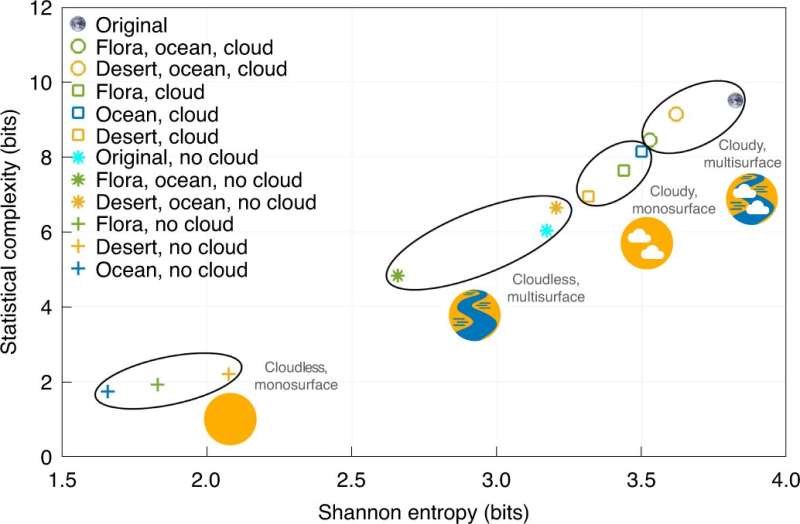February 10, 2022 report
Using epsilon machines to assist in the search for alien life

A team of researchers from the California Institute of Technology and Sony Computer Science Laboratories has begun to search for life on other planets using a tool that analyzes statistical complexity. In their paper published in the journal Nature Astronomy, the group describes using epsilon machines to search for life on alien worlds.
To date, space scientists have mostly relied on data characteristics of Earth as they search for life on other planets. The problem with doing so, the researchers note, is that life elsewhere could be completely different from that on Earth. So they sought other ways to analyze signals from other planets. As part of that effort, they noted that epsilon machines might help.
Epsilon machines are not hardware devices, as their name implies; they are algorithms designed to calculate complexity by analyzing associated data. Such algorithms have been used to study bird flocks, for example, or how individual brain cells might give rise to human consciousness. They note that looking at Earth from a distance suggests something different from other planets in our solar system. It is clearly more complex, and much of that complexity is likely due to the presence of life. Thus, the researchers contend, it seems that instead of looking for oxygen signatures on other planets, or the presence of carbon, space scientists might want to look at the complexity of a given planet—and one way to do that is by using epsilon machines. To that end, they trained an epsilon machine on images of Earth taken from a distance. They then did the same for several of the other planets in the solar system to show the machine what lifeless planets look like. They also used other data meant to depict Earth as if there were no life on the planet.
They data revealed that Earth is approximately 50 percent more complex than the other planets in the solar system. They also found that extra-solar planets known to have more surface types and complex atmospheric conditions scored higher as well. The researchers suggest that the use of epsilon machines could be a new tool for space scientists looking for life in other places.
More information: Stuart Bartlett et al, Assessing planetary complexity and potential agnostic biosignatures using epsilon machines, Nature Astronomy (2022). DOI: 10.1038/s41550-021-01559-x
Journal information: Nature Astronomy
© 2022 Science X Network

















